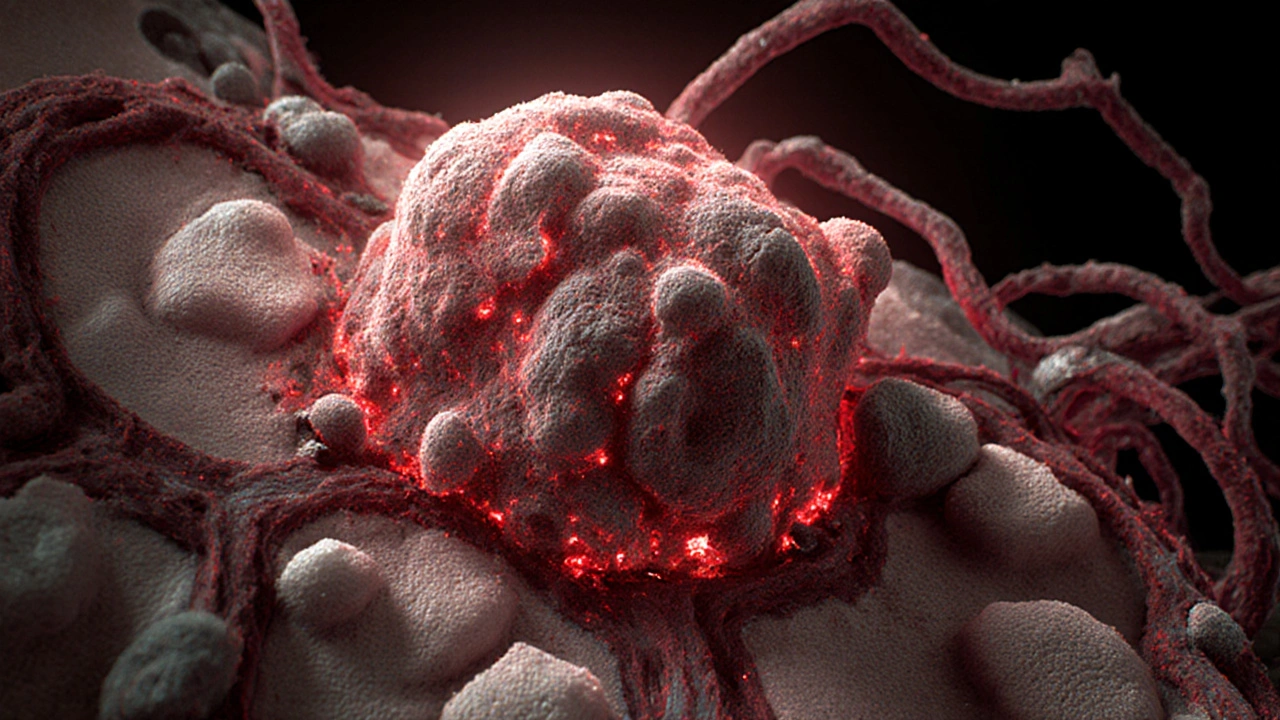Cancer Stages: What They Are and Why They Matter
When talking about Cancer Stages, a step‑by‑step breakdown of tumor size, lymph‑node involvement, and spread to other organs. Also known as cancer staging, it helps doctors decide how aggressive a treatment should be and gives patients a realistic picture of prognosis.
One of the most widely used frameworks is the TNM Classification, a system that scores the primary tumor (T), regional lymph nodes (N) and distant metastasis (M). The TNM numbers turn into a stage from I to IV, and that numeric stage is the bridge between the raw data and the treatment plan. For example, a T2N1M0 lung tumor lands in Stage II, meaning the tumor is larger than early‑stage disease and has reached a few nearby nodes, but hasn’t spread far.
Key Pieces That Shape a Stage
Beyond TNM, two other entities influence the final stage label. Tumor Grade, the microscopic appearance of cancer cells indicating how quickly they’re likely to grow, adds nuance—high‑grade tumors behave more aggressively even if they’re small. Then there’s Metastasis, the spread of cancer cells to distant organs such as liver, bone or brain. When metastasis is present (M1), the stage jumps to IV, regardless of the primary size.
These entities don’t live in isolation. The central idea—cancer stages—encompasses tumor grade, and the TNM classification defines the precise thresholds for each stage. In turn, the presence of metastasis influences both the TNM score and the overall stage, which directly shapes treatment decisions like surgery, chemotherapy, radiation or targeted therapy.
Why does this matter for you? Staging tells you whether a disease is curable, manageable, or advanced. It guides what tests you’ll need—imaging such as CT, MRI or PET scans, and pathology reviews—to confirm the T, N and M components. It also sets expectations for survival rates and helps you compare treatment options. For instance, early‑stage melanoma, often covered in our articles, may be treated with a simple excision, while later stages require immunotherapy and regular scans.
In the collection below you’ll find practical guides that tie directly into these concepts: how oral cancer signs can flag an early stage, the role of alternative medicine in melanoma treatment, and safety tips for exercising with rare tumors like pheochromocytoma. Each piece builds on the basics of cancer staging, giving you real‑world context and actionable steps.
Now that you see how the pieces fit together, dive into the articles below to explore specific cancers, learn how doctors stage them, and discover tips for navigating your own health journey.
Understanding Tumor Growth and Cancer Stages
Explore how tumor growth drives cancer progression, learn the TNM staging system, and discover what each stage means for treatment and survival.
Read more
